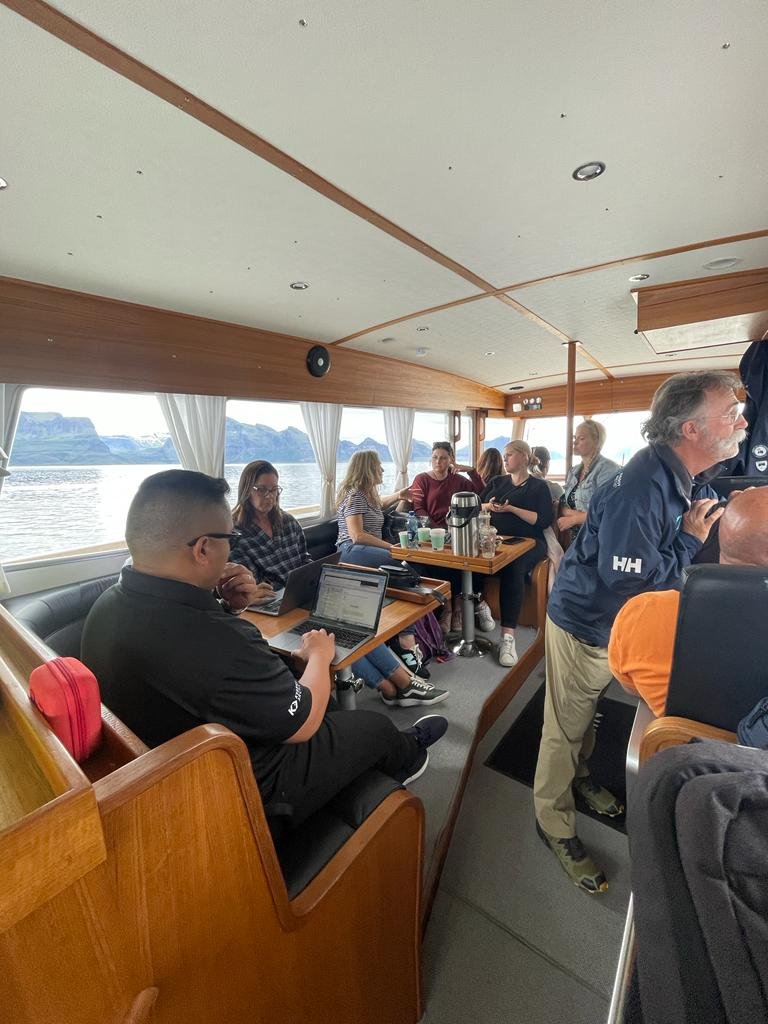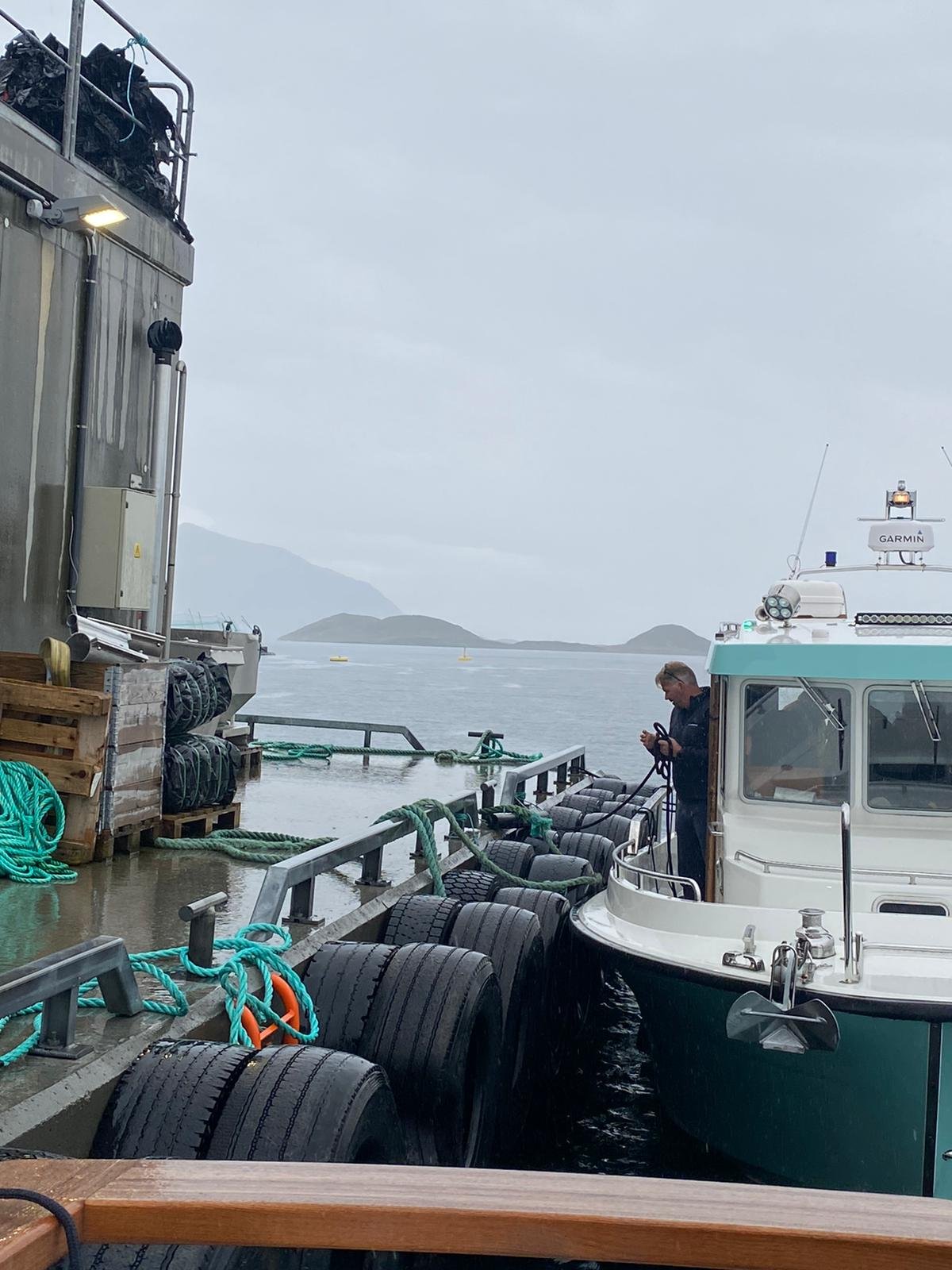Norwegian Travelogue: Bodo and Kvaroy Island (Part 1)
In a world of zoom conversations and working from home alone, meeting colleagues in real life, all at the same time, AND at the other end of the world is a very special, enriching, and bonding experience.
This article follows the stories that led to this exciting moment of encounter between a bunch of Americans with various cultural backgrounds and a bunch of Norwegians who have lived for generations on Indre Kvarøy: a Norwegian island located at the very entrance to the magical world of the Arctic Circle.
Experiencing cultures, relationships, and ourselves through travel and food is transformational and paramount to us, hence we invite you on our journey to the north.
The Commute
Landing after long transatlantic flights in Oslo was only the very first stop on our journey from various points in the US to the island of Kvaroy. Our second flight was to Bodo, known for the world’s largest maelstrom*. From there we got on a ferry and then on a boat in order to reach Kvaroy island by water. But before talking about Kvaroy, let us share a few things that impress us about Norway and Bodo.
Literally every road of Norway is so picturesque, as if taken from a postcard. We are in awe of the way Norwegians care for their country. From the houses, to the infrastructure, the buildings, and the attitude towards nature, everything demonstrates responsibility and tight-knit community spirit. The roads and the towns are surrounded by fjords, breathtaking mountains, lavish greenery, streams, waterfalls, and snowy peaks. The air is crisp, cool, and beautifully transparent. Unsurprisingly, nine out of ten cars that we see passing by, are electric!
Bodo
Five hours driving distance from Indre Kvarøy and 3 and a half hours by a ferry that operates only once daily, Bodo is a town that was created by merchants. It has a rich history and many traditions inherited from the centuries of trading and seafood stewardship. In World War II much of the town was destroyed by German air and ground action, but it has been completely rebuilt and enlarged.
With over 55 thousand people living there, Bodo is a commercial-fishing center specializing in cod drying, but there you can also find ship repair yards, and… a brewery.
Nowadays, Bodo is popular for a mix of cultural inheritance and fabulous hiking trails, also for the largest North Norwegian treasure from the Viking Age ever found. According to Lonely Planet, the best restaurants in Bodo are Roast and Bryggerikaia. We were lucky to taste some of the offerings on their menus, and speaking from experience, we do agree with Lonely Planet’s recommendations!
Indre Kvaroy Island
Some say that the food is half of the journey. For us it’s the real reason for the whole journey—that’s why we went on a quest to experience the Northern Norwegian traditions in food, salmon raising, and life.
Northern Norwegian food is extremely simple because the ingredients are freshly harvested from the pure nature around. Many of the country’s traditional dishes have been prepared for centuries and recipes have been passed through generations. Luckily, we had the privilege to taste a very popular and authentic local dish—the smoked salmon—homemade by Geir Olsen.
Geir, along with his father Alf Olsen (a fish farming pioneer), is one of the founders of what today is called Kvarøy Arctic, started in 1976. In 2008, ownership was passed along to Ida, Gjermund and Håvard, Geir’s daughter and two sons. Soon after Alf-Goran Knutsen married Ida, he was invited by his father-in-law to join the 3-rd generation, family-owned farm.
Kvarøy is home to about 80 inhabitants. “In such a place, everyone must wear more than one hat and people are always in motion. Alf-Goran Knutsen wears many, serving as a veritable engine for the community”, John Waldman once said when visiting the farm during the winter in 2018. His words resonate with us especially now… when we see our CEO in his natural habitat and when we do have to wear hats in August.
For dinner one evening, we gathered at the island’s only restaurant Oleas Kjøkken, housed in a refurbished cobbler’s shop on a pier and named after the great grandmother of Ida, Gjermung, and Havard. It’s open only by request, which adds extra mystery and excitement. A part of the restaurant is turned into a museum showcasing the island’s modest commercial history through aged cannery tins and antique machinery.
The locals here love their history. The various museums throughout the island bring that feeling in us. Kvaroy Arctic’s family commemorates their own heritage through turning their great grandfather's ship into a public centerpiece that lights up at night.
Tasting Kvaroy salmon on the very land that welcomes the waves of the pristine waters where it’s raised is a very special feeling. We ate it seared and served over a stew of local vegetables and beans. Desserts were also local - different berries (like local cloudberries!) and homemade vanilla ice cream.
The Modern Interpretation of Traditions
Community is tight and supportive, traditions are valued, continued, and also expanded through modernization, and protecting the waters is a long-time shared goal. One example of this is SJY, pronounced [shee], a local, sustainable, seafood producer that makes sea chips made from sustainably sourced seaweed and kelp also on Indre Kvarøy. Their name is inspired by the local word for “ocean” and their snacks are inspired by the nurturing nature of the Norwegian sea.
We also were incredibly fortunate to taste a special meal cooked by chef Eric Gephart. He cooked fish that was pulled straight off of the Kvaroy farm, grilled over local birch wood from the island, and cut into chunks for tacos. Where Norwegian cuisine meets Mexican cuisine!
The Art of Feeding
We love talking about what we eat and what we produce. But we know that we are what we eat and, especially, what it eats. Maybe you will need to reread that again: We are what we eat eats.
For Kvaroy fish, we use the best feed ingredients that help us raise some of the healthiest, most sustainable salmon in the world today. Our salmon gets fed 3 times daily, which amounts to 350 tons of feed needed every 10 days! Our pens are 120 meters around and 30 meters deep. 400 tons of fish in each pen, which is about 60,000 fish. All the fish get fed with quality ingredients that we can trust for our family, our community, and yours!
Next Stop
Heading to Lofoten! Stay tuned for more!
*A maelstrom is a powerful whirlpool in the sea or a river. Rushing waters and powerful tidal currents passing through a long, narrow strait create the Saltstraumen maelstrom. This massive whirlpool's an astonishing ten meters (33 feet) wide.














